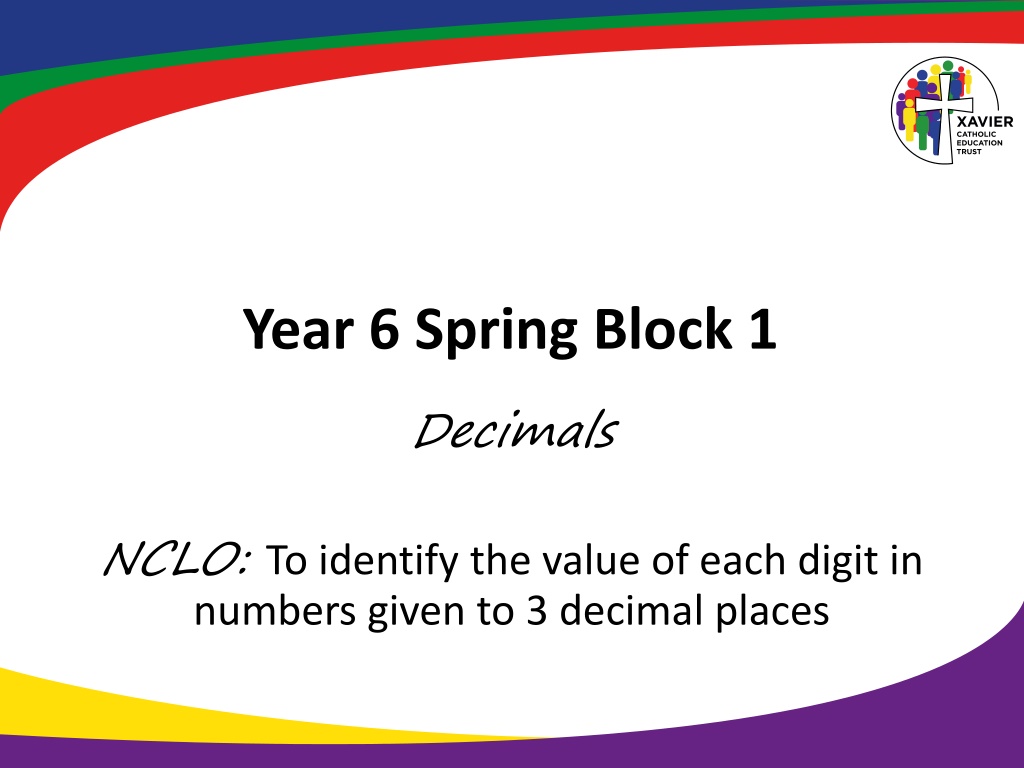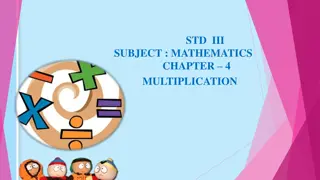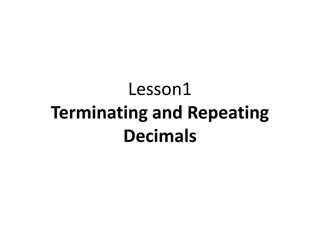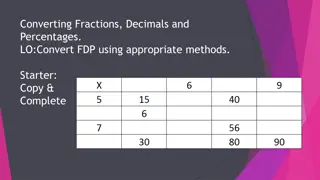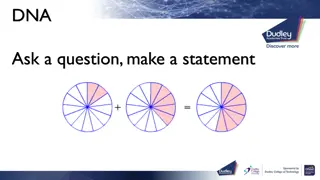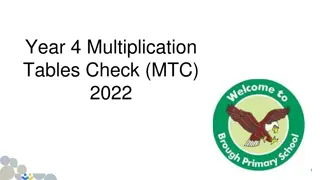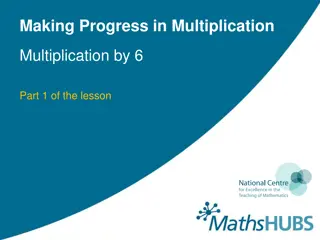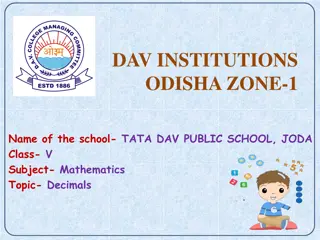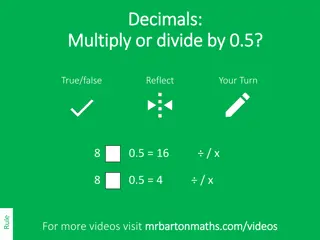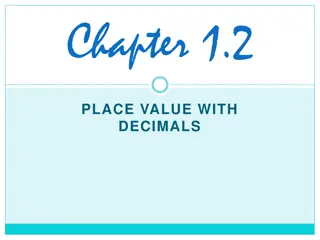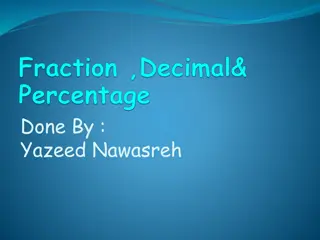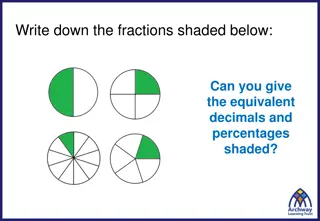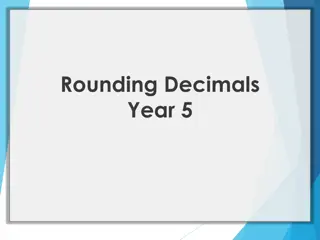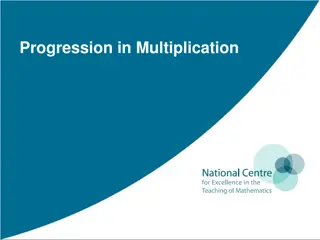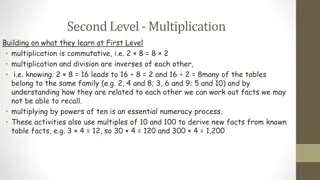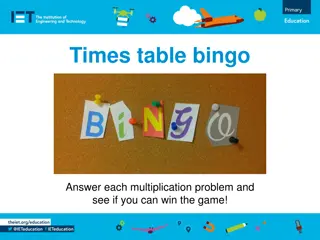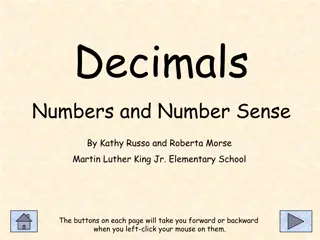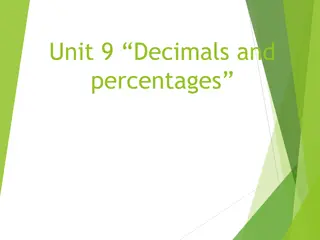Understanding Decimals: Value Identification and Multiplication
This content focuses on identifying the value of each digit in numbers to 3 decimal places, understanding tenths and hundredths, using place value charts effectively, and multiplying numbers by 10, 100, and 1,000 in decimal form. It includes key vocabulary, questions, fluency exercises, and reasoning and problem-solving tasks to enhance understanding and application of decimal concepts.
Download Presentation

Please find below an Image/Link to download the presentation.
The content on the website is provided AS IS for your information and personal use only. It may not be sold, licensed, or shared on other websites without obtaining consent from the author. Download presentation by click this link. If you encounter any issues during the download, it is possible that the publisher has removed the file from their server.
E N D
Presentation Transcript
Year 6 Spring Block 1 Decimals NCLO: To identify the value of each digit in numbers given to 3 decimal places
Key vocabulary and questions 354.631 How many tenths are in the number? How many hundredths? Can you make the number on the place value chart? How many hundredths are the same as 5 tenths?
Year 6 Spring Block 1 Decimals NCLO: to multiply numbers by 10, 100 and 1,000 giving answers up to 3 decimal places.
Key vocabulary and questions What number is represented on the place value chart? Why is 0 important when multiplying by 10, 100 and 1,000? What patterns do you notice? What is the same and what is different when multiplying by 10, 100, 1,000 on the place value chart compared with the Gattegno chart?
Year 6 Spring Block 1 Decimals NCLO: to multiply numbers by 10, 100 and 1,000 giving answers up to 3 decimal places.
Key vocabulary and questions What happens to the counters/digits when you divide by 10, 100 or 1000? Why is the zero important? What is happening to the value of the digit each time it moves one column to the right? What is the relationship between tenths, hundredths and thousandths?
Year 6 Spring Block 1 Decimals NCLO: To multiply one-digit numbers with up to 2 decimal places by whole numbers
Key vocabulary and questions Which is bigger, 0.1, 0.01 or 0.001. Why? How many 0.1s do you need to exchange for a whole one? Can you draw a bar model to represent the problem? Can you think of another way to multiply by 5? (multiply by 10 and divide by 2).
Year 6 Spring Block 1 Decimals NCLO: To multiply one-digit numbers with up to 2 decimal places by whole numbers
Key vocabulary and questions Are we grouping or sharing? Explain why. How are these different? How are they the same? How else could we partition the number 3.69? (For example, 2 ones, 16 tenths and 9 hundredths.) How could we check that our answer is correct using the inverse? Which method, sharing or grouping, shows the inverse more clearly?
Year 6 Spring Block 1 Decimals NCLO: to use division to solve problems in cases where the answer has up to 2 decimal places
Key vocabulary and questions How can we represent this problem using a bar model? How will we calculate what this item costs? How will we use division to solve this? How will we label our bar model to represent this?
Year 6 Spring Block 1 Decimals NCLO: To use and understand fraction and decimal equivalences
Key vocabulary and questions How would you record your answer as a decimal and a fraction? Can you simplify your answer? How would you convert the tenths to hundredths? What do you notice about the numbers that can be simplified in the table? Can you have a unit fraction that is larger than 0.5? Why?
